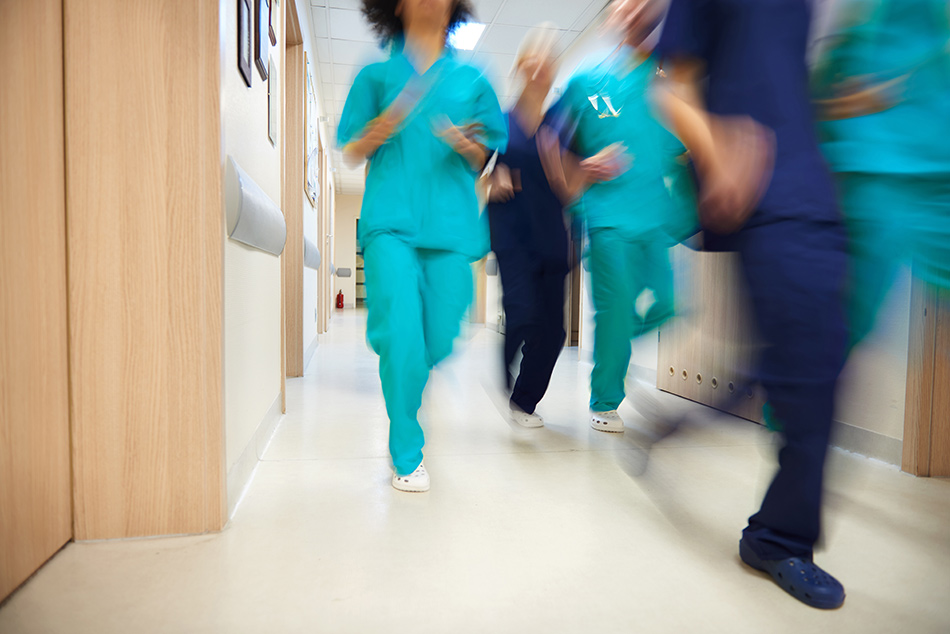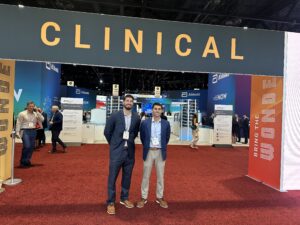Ever since the common practice of using needles by Alexander Fleming in the early 20th century, needles and syringes have been commonly used to either administer medication or extract fluids – most commonly blood – from patients for testing. Where it stands right now, syringes and needles have become a lot safer than their past counterparts. Back then, the reuse of needles was a lot more common due to the fact that it used to be made of glass rather than disposable plastics. In which case, the sterilization of these needles has been left to the impetus of the user.
The irony of medical sharps, more specifically, syringes and needles, is that while they are used to treat and diagnose so many patients and diseases; they could be sources of illness too. Extracting blood from one patient and using the same syringe to extract from another could infect the second person with whatever bloodborne pathogen the first has. Because of the many transmutable diseases and complications that could stem from the poor handling and sterilization of needles and syringes, the etiquette and the proper disposal practices around needles has long been necessary.
In this article, is the history of medical sharps such as needles, as well as answers about what happens to used needles from hospitals and how these needles are disposed of.
History of Syringes
The earliest recorded use of needles date as far back to the Greco-Roman literature where several accounts have described the use of syringes through hollow reeds to apply oil to individuals. Granted, these aren’t penetrative uses of syringes. The more familiar use of syringe was through the ones used by Egyptians which was to utilize suction to extract cataracts from the eye at around 900 CE.
A couple of hundred years later, Pascal’s invention allowed for the infusion of medicines in syringes resulting from his experimentation with hydraulics. However, injecting humans with medication was something that was invented by Esholttz and Major where they adopted a technique created by Christopher Wren to inject dogs with a poppy sap and used the “cut-down” technique method on humans. This resulted in casualties due to the failure of both doctors to consider dosage and sterilization.
Eventually, about two centuries later, the major components of the syringes that we know as of today were invented by Francis Rynd. Rynd’s syringe consists of a barrel, a plunger, and a piston. These syringes are often made of either plastic, metal, or glass. Later on, hypodermic needles would be added to these syringes to be able to infuse patients with morphine. The plunger acts both as a suction and a pump that would be used for extracting and injecting fluids. This concept of a needle is thanks to Alexander Wood.
Ever since this invention, the basic concept of what comprises a needle has been carried throughout the modern period.
Different Types of Medical Sharps
In the recent era, the concept of a syringe has proliferated into various types of medical devices. They often serve different purposes in the field of medicine but are all considered to be hazardous. Simply, physicians and other hospital workers must exercise caution around the use of these objects.
- Needles are often identifiable through its qualities being that it’s a sharp piece of hollow metal that is often used to infuse medication under the skin. The most common type of needle that fits that description are hypodermic needles. However, there are different types of needles such as:
- Dialysis fistula – needles that have their flows optimized for the consistent flow during dialysis.
- Huber needles – needles that allow for the repeated access to the veins for withdrawal of fluids.
- Spinal needles – usually made out of flexible material to puncture the lumbar.
- Syringes are different from needles because they refer to the device itself that needles are attached. As previously mentioned, the barrel, the piston, and the plunger in itself is the syringe. There are different types of syringes that vary according to how they hold the needle in place. These are:
- Luer Lock Hub – holds the needle through threading.
- Polypropylene Slip Hub – wherein the needle slips over the barrel tip for easy installation/
- Catheter Tip – the type of syringe used when injecting a patient using a tube or in instances where the needle is larger than a standard tip.
- Eccentric Tip – where the tip of the syringe is slanted to ease the process of injecting a needle parallel to the skin. This is usually done when injecting into a vein without puncturing the entire vein.
- Lancets are often employed to puncture or prick the skin through a sharp blade or needle. They are used for extracting blood samples. Lancets are most commonly used to test for a person’s sugar level. The variation with lancets are often just how the blade can be sheathed or released. These are all due to the high likelihood of incident and injury surrounding medical sharps.
Dangers of medical sharps in hospital settings
From IV tubing to administering medicine, needles and medical sharps are essential tools in a healthcare environment. In fact, millions of injections are administered annually. And with this statistic are risks and injuries associated with medical sharps. In 2021, the recorded recent statistic of sharps injuries per year is almost at 400,000.
Injury does not only happen through the breaking or puncturing of the skin but of the possibilities that may happen afterwards. Once the skin is damaged, there is a possibility for bacteria to enter the body and causes disease. Moreover, getting punctured by a used needle could put an individual at risk especially if the previous user’s blood contains infectious agents such as Hepatitis B & C or HIV.
The Centers for Disease Control and Prevention breaks down this number by the demographic of individuals affected. More than half of it are nurses, and only 25% of the statistic applies to non-healthcare workers.
Because healthcare workers are at the forefront of the fight against COVID-19, it is important to minimize the dangers. This can happen through proper handling and disposal of sharps, as well as innovating safer types of medical sharps.
How can we make sharps safer?
Disposal & Handling: what to do with used needles
On the level of handling and disposal, sharps can become less harmful through the following steps:
- About a large majority of sharps-related injuries stems from the duration of it being used in hospitals. Usually, injuries happen when recapping, disassembling, preparing the needles for use, and every step in between. Hence, the proper handling of sharps (specifically needles and syringes) is that recapping machines, or the one-hand recap method is used. Otherwise, the risk of injury is significantly larger. Moreover, it is important that one does not break or bend needles.
- There are designated sharps containers for the disposal of medical sharps. These are usually FDA-approved plastic containers that are colored red. Containers are often found in pharmacies, hospitals, and other online stores. These are puncture-proof and leak-proof containers that must be filled up to a third of its capacity before it is sent to sharps container disposal companies. These containers must be kept out of pets and children’s reach. And lastly, if they have been contaminated by blood, these containers must carry the biohazard logo.
- Once sent to medical waste disposal facilities, these facilities would have the appropriate machinery to disassemble syringes and purify them in such a way that they stop becoming harmful to their environment. To ensure that sharps are disposed of properly, an individual can approach mail-back programs, drop boxes, supervised collection sites, residential special waste pick-up services, and more to dispose of their sharps containers.
Innovation
As of late, there has been a movement to create safer needles. Some of these are:
- Needleless Connector System – often features connectors for IV delivery systems that contain pre-pierced ports and complementary valved connectors.
- Self-sheathing Safety Feature – Disposable syringes that have sliding needle shields.
- Retractable Technology – Needles or sharps such as scalpels that retracts back into the device.
- Self-blunting Technology – Needles that automatically blunts itself after use.
- Hinged Safety Feature – Hinged sliding shields that are attached to syringes.
What should you do if you get injured by a sharp?
When punctured by a potentially contaminated sharp, it is important to follow these steps:
- Apply pressure on the wound in order for it to bleed out. This process is usually eased by allowing it to bleed through running water so that the contaminants attached to the sharp would not enter your bloodstream.
- Wash the wound with soap and running water.
- Dry the wound and cover it with a hydrophobic material or dressing.
- It is important to contact your employer if the injury happened at work, OSHA takes needlestick injuries very seriously. Moreover, when going to the hospital, it is also important to take note if you know whether or not the sharp that injured you is contaminated by blood or other potentially infectious materials.







